Table of Contents
Are you looking for good roofing options for your house’s exterior? There is no doubt that a roof ups the style game of any house. Any kind of roof not only increases the show of your home but it is also done to keep it safe from all kinds of sudden damage. Therefore, we’d say a really good option for roofing could be the roll roofing. Your house is like your place of comfort, and you spend most of your time in it. Just like you tend to keep the interior clean at all times, the same way you need to be concerned about the outer part of the place you live in. Whether it’s about installing a rooftop or inspecting the roof of your house, it all should be your priority. If you’re wondering how to begin with this kind of roofing, keep your worries aside. Come with us as we explore the proper guide from installation to cost. Hence, let’s look at our roofing discovery and dial the number of your trusted roofing contractors!
homeserve.com
Roll Roofing
A house is your shelter, and taking care of it is your responsibility, just like it gives you a roof. Whether you call that Roof Maxx services to clean your rooftop or any other kind of house maintenance. Roll roofing, sometimes called rolled or roofing rolls, is an affordable and readily available roofing material frequently used for carports and sheds. It comes in huge rolls that may cover up to 100 square feet each, making installation easier than individual asphalt shingles. It is less aesthetically pleasing than roofing materials like standing seam metal or shingles. Still, it works well as an outbuilding’s functional alternative or a temporary residential roof. Installing it is simple and affordable, which makes it a popular option for do-it-yourself home repair tasks. Roofing cement is usually used during installation to firmly attach the rolls to the slope roofs, and hidden nails are used to ensure a tight fit. Rolling roofing comes in various varieties, including asphalt roll roofing and mineral surfaced, and may be purchased at neighbourhood home improvement stores. Let us explore more about how rolled roofing works exactly.
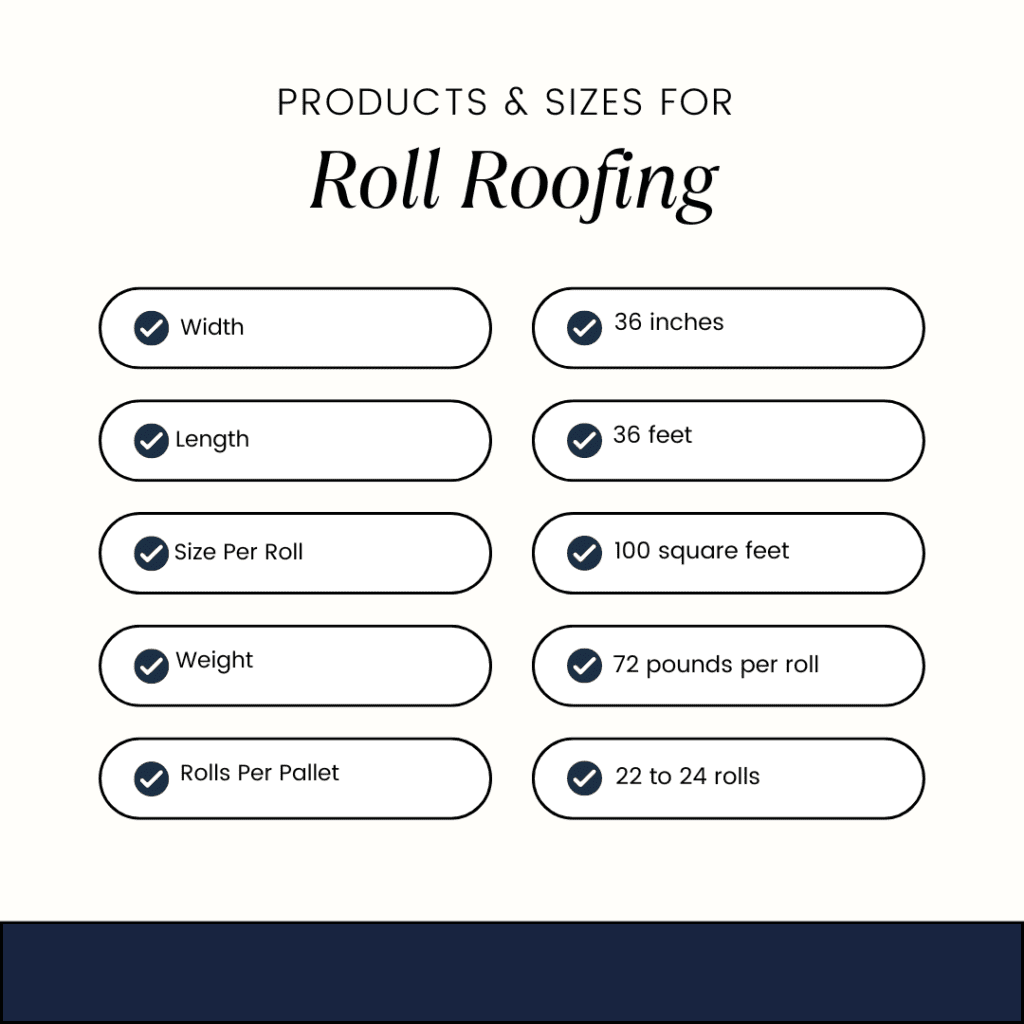
Rolled Rubber Roofing Dimensions
Standard measurements for rolled rubber roofing are 36 feet long and 36 inches broad, covering 100 square feet. This roofing is well-liked because it is affordable and straightforward to install. Rolled rubber roofing is less durable and thinner than composite shingles.
- Thirty-six feet long by 36 inches wide are the dimensions.
- Each roll has a coverage of 100 square feet.
- Installation is more straightforward than with shingles
- An affordable roofing option
- Less strong and thinner than composite shingles
- Builders frequently use rolled rubber roofing as an underlayment or an additional material.
- Its lightweight and controllable dimensions make it a sensible option for numerous roofing tasks.
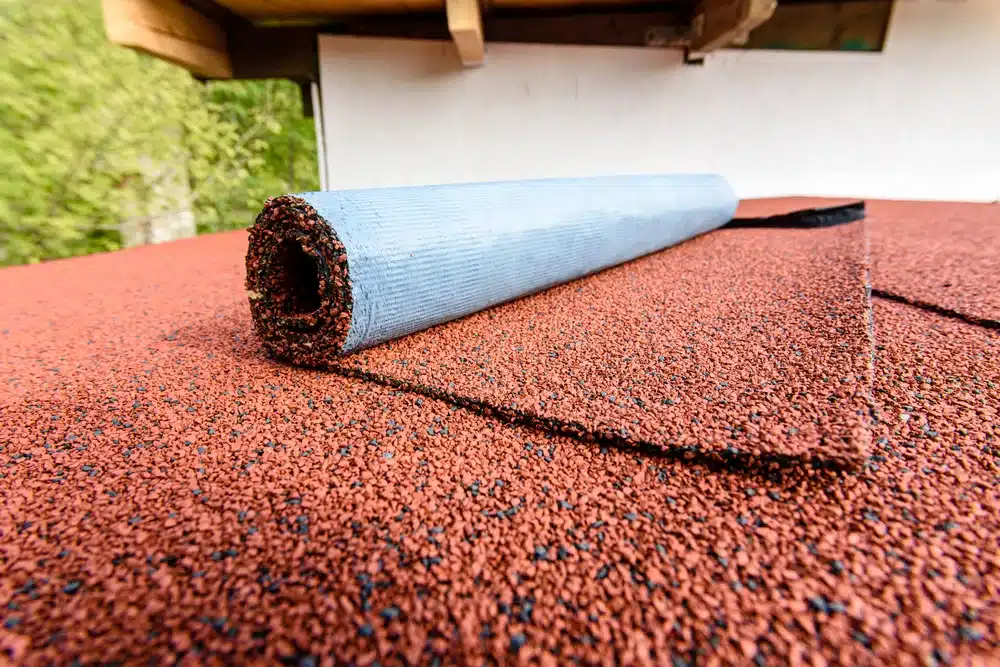
A Glimpse at Applications for Roll Roofing
Have you ever wondered where roll roofing is applied? It is ideal for unoccupied structures because it is affordable and practical.
· Roll Roofing for Sheds
Perfect for offering rudimentary weather protection.
· Workshops
Provides a workspace solution that is simple to install.
· Roll Roofing in Garages
Cars are protected from the weather by detached garages.
· Carports
Offer a straightforward, long-lasting covering.
· Potting Sheds
Provide a dry place for gardening equipment and tools.
· Barns
Effectively safeguard cattle and storage spaces.
Laying roll roofing eliminates the need for complex roofing systems while maintaining the functionality and protection of these buildings.
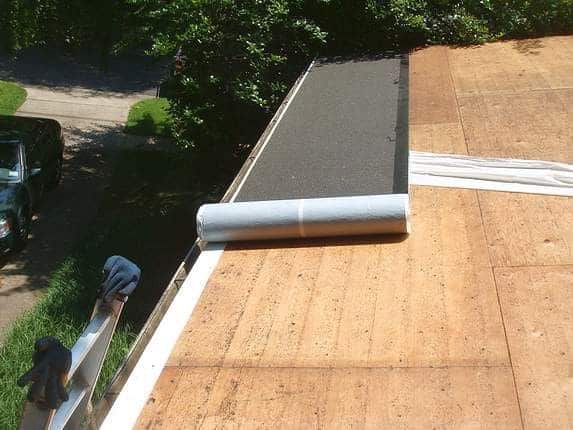
How to Install Roll Roofing
Now, you must be thinking about how I install rolled roofing. Here are a few steps you need to follow, nothing more.
- Thoroughly clean the roof’s surface.
- Coat the underlayment with a composition of roofing cement to ensure it is secure.
- After rolling out the roofing material, trim it to the appropriate length.
- With a small overhang, place the initial layer at the roof’s edge.
- Every three inches along the edges, fasten nails into the roofing.
- To seal the nails, cover them with roofing cement.
- Give the subsequent layer a 4-inch overlap. We would recommend you to use a self stick roll.
- Nailed and roof cement the overlapped layer in place.
- Continue doing this until the roof is completely under coat.
- To stop leaks, caulk the edges using roofing cement and saturated felt.
- Make sure the roof is still in good shape by doing routine inspections.
The Pros and The Cons

PROS OF ROLL ROOFING
- Economical
The cheapest type of roofing material is rolled roofing, which is even less expensive than composite shingles.
- Lightweight
It is easy to lift without extra equipment because it comes in 75-pound chunks.
- Adaptable
This material is ideal for covering roofing ridges and hips because it can be cut into strips of any size.
- Do-it-yourself friendly
Simple to install by do-it-yourself and frequently approved for installation over pre-existing roof shingles.
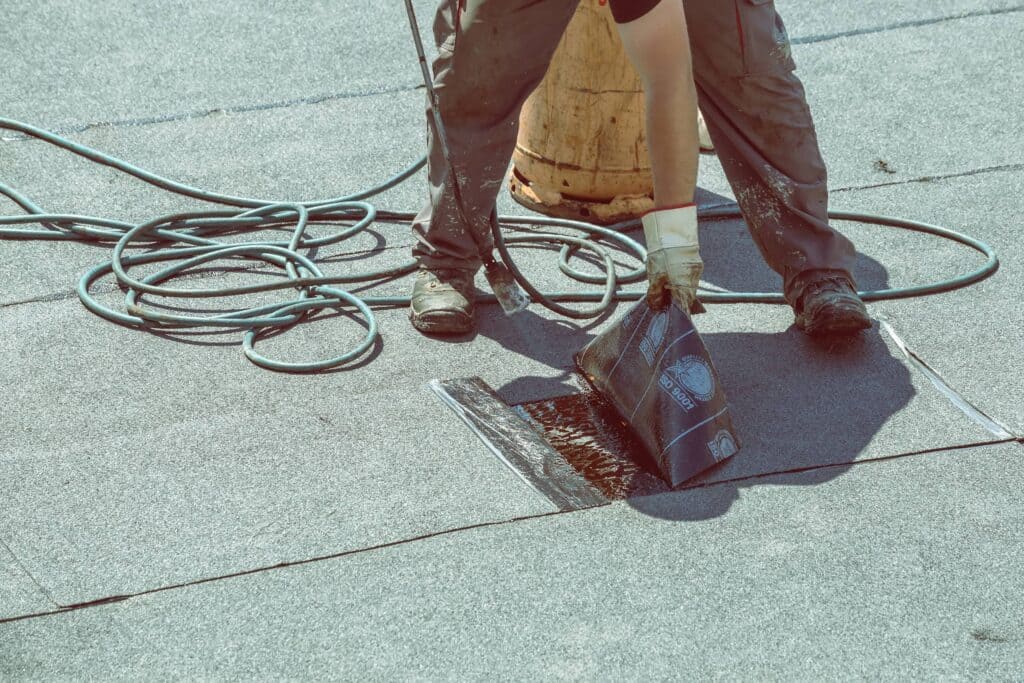
CONS OF ROLL ROOFING
- Restricted Visual Appeal
Only a few colors, black, white, tan, gray, and green, are there.
- Less Durable
Roofing is more prone to tears since it cannot expand and contract like shingles.
- Less Attractive
Homeowner associations may restrict what is less attractive.
- Low Resale Value
The home’s value at auction is low as a temporary fix.
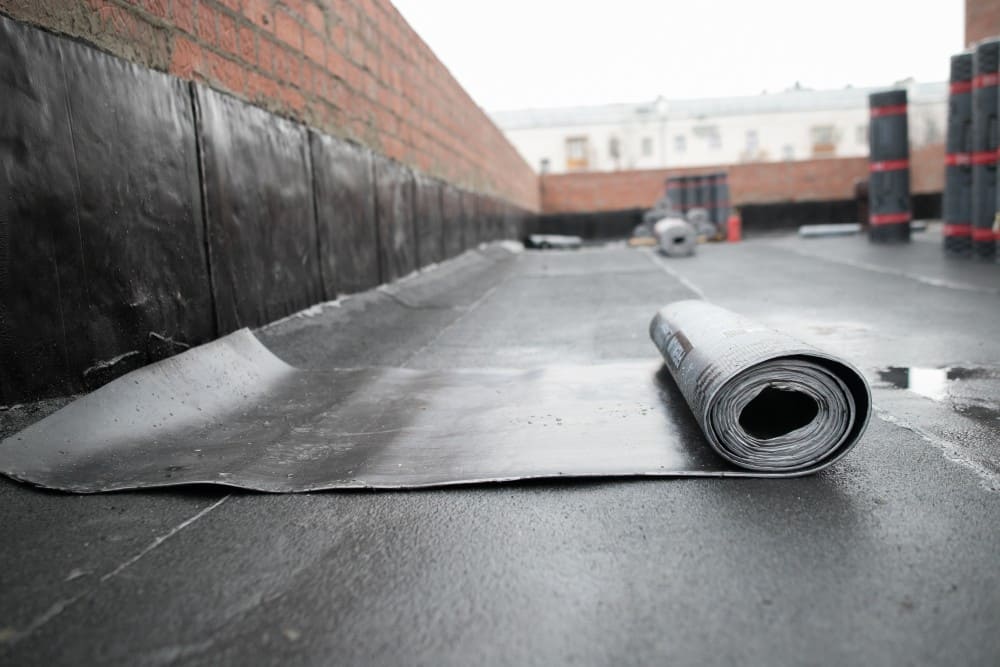
Final Thoughts
As we conclude, roll roofing is a shining example of roofing innovation, providing DIY enthusiasts and contractors with diversity and ease of installation. Rolled rubber roofing, usually 36 inches wide, is for various tasks, from little repairs to large-scale home renovations. It is a sensible option due to its price and longevity, and its easy installation, aided by a chalk line and concealed nails, guarantees accuracy and effectiveness.
In conclusion, roll roofing projects incorporate practicality and dependability for all roofing jobs, from purchasing materials from local stores to weighing the advantages and cons.
